
Long before Instagram, Eaton’s knew that its customers liked to share pictures of the chicken dinner they were about to eat. So they took the picture for them and put it on a postcard, ready to be mailed to friends near and far.
A Project of The Library Foundation of Los Angeles Based on the Menu Collection of the Los Angeles Public Library

Long before Instagram, Eaton’s knew that its customers liked to share pictures of the chicken dinner they were about to eat. So they took the picture for them and put it on a postcard, ready to be mailed to friends near and far.
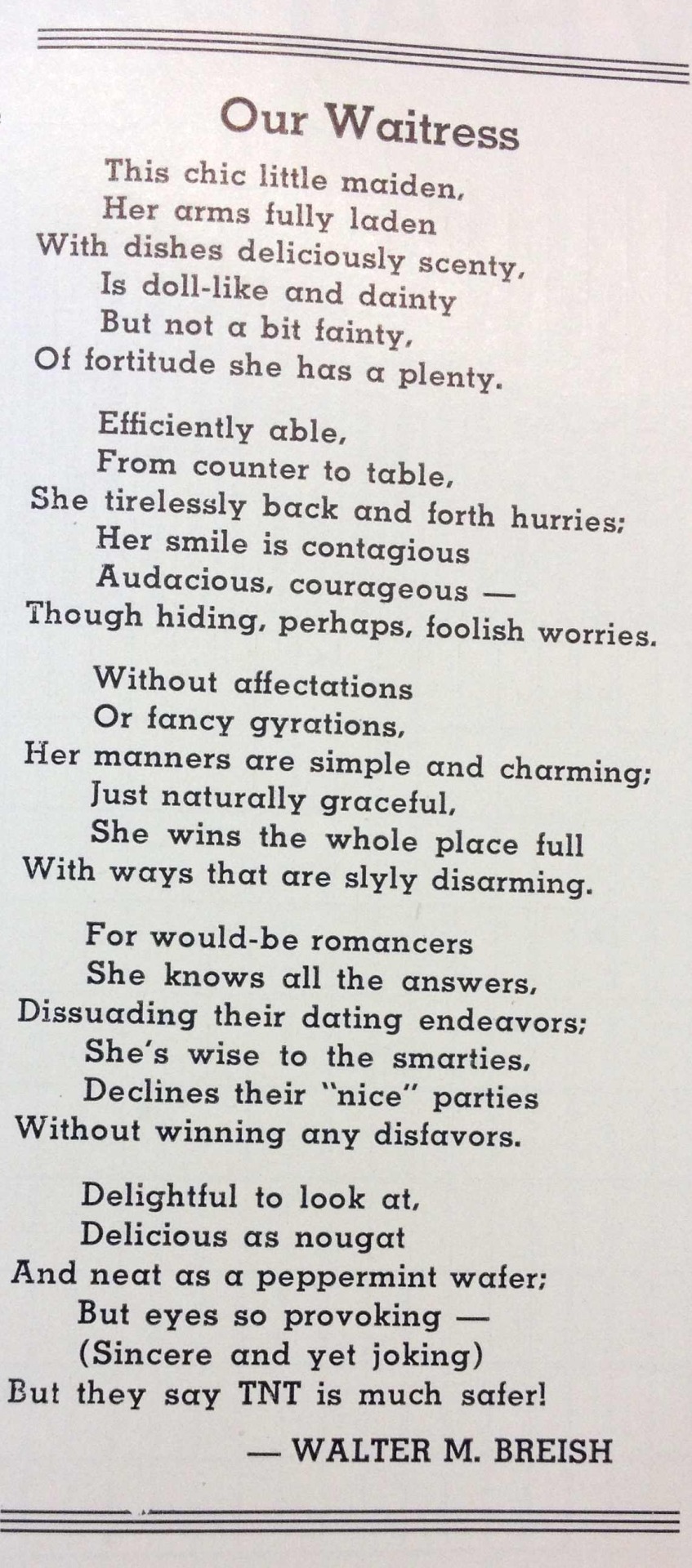
As part of their December 1936 tribute to the rise of “The Woman Executive” in restaurants and tea-rooms across the country, Restaurant Management magazine included this ode to the waitress.


In the 1930s, Restaurant Management magazine ran a monthly column, “The Menu Profit Maker,” designed to help restaurants maximize their menus to “ring the cash register.” In December 1936, the magazine offered up some menu design recommendations and “club plate arrangements” that had been effective in boosting sales.



In the 1930s, The Weekly Publishing Service of Los Angeles provided a free menu guide each week. This one from January 17-23, 1937 was focused on “Foreign Cooking” that could be had without leaving Los Angeles (unless you wanted to get aboard the French Line cruise ship advertised on its back page and eat the Chief Steward’s crepes suzette). These were its recommendations: Lucca for Italian, Paris Inn for French-Italian, Rene & Jean for French, Little Hungary for Hungarian, Soochow Cafe for Chinese, Cafe Caliente for “Spanish,” and La Merienda (a “Genuine Cafe of Old Mexico” stationed, appropriately, in the Crossroads of the World building).
Los Angeles! Where religion turns into thousands of obscure cults; where by street dress men and women merge into a common sex; and where the fine art of eating becomes a pseudo scientific search for a lost vitality hidden in the juice of a raw carrot.

A 1970s matchbook from the Angel’s Flight restaurant of the downtown Hyatt Regency. For our book, chef Susan Feniger– no culinary stranger to the Angel’s Flight district and its historical layers of commercial and financial development– has remixed the original restaurant menu in a way that connects the early 20th century to the early 21st.
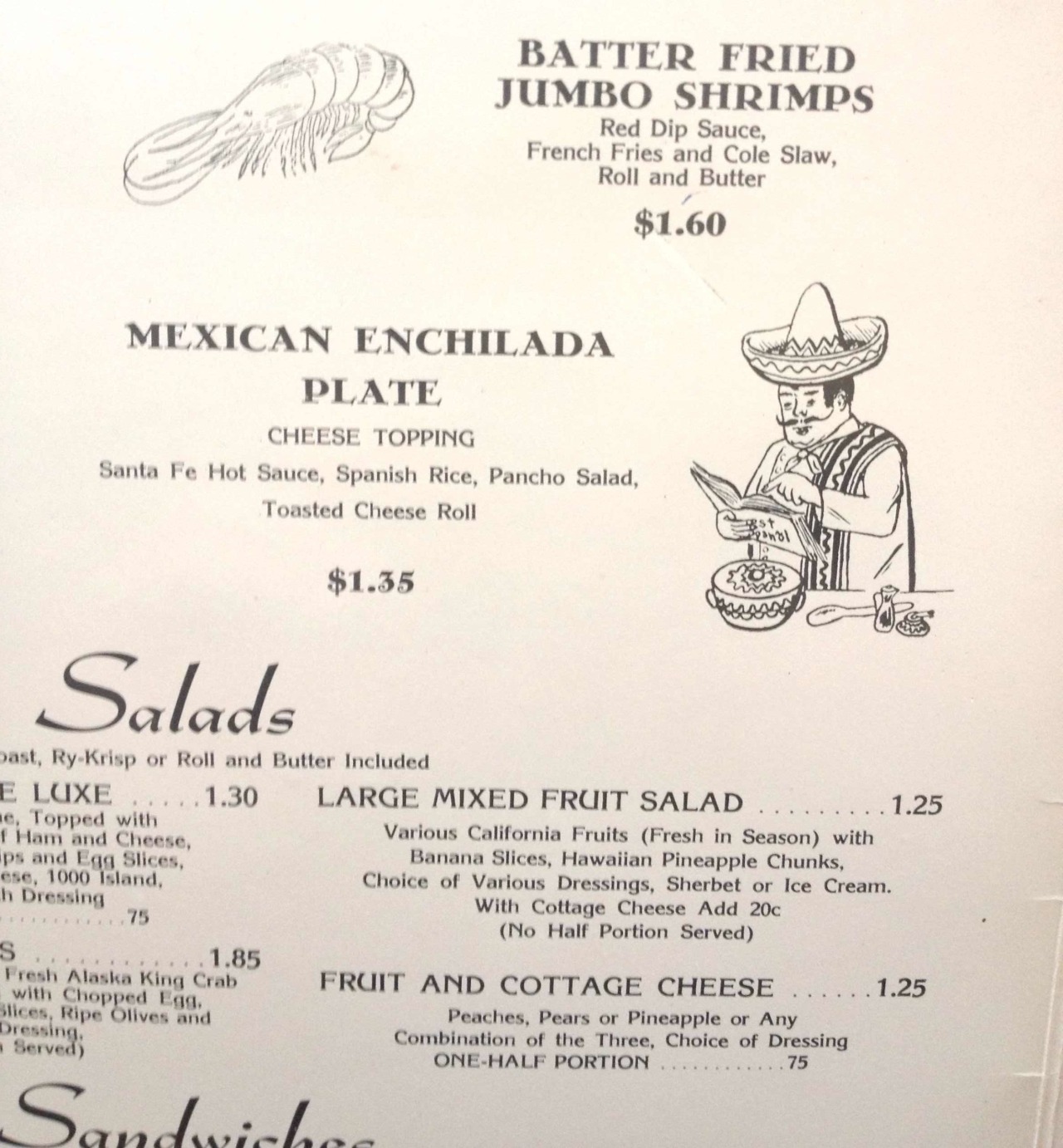
For most of the last century, the cousin of The Sleeping Mexican– The Cooking Mexican– was a design mainstay on the menus of many non-Mexican L.A. restaurants. In some cases, he vanished altogether, leaving only a phantom sombrero or serape.
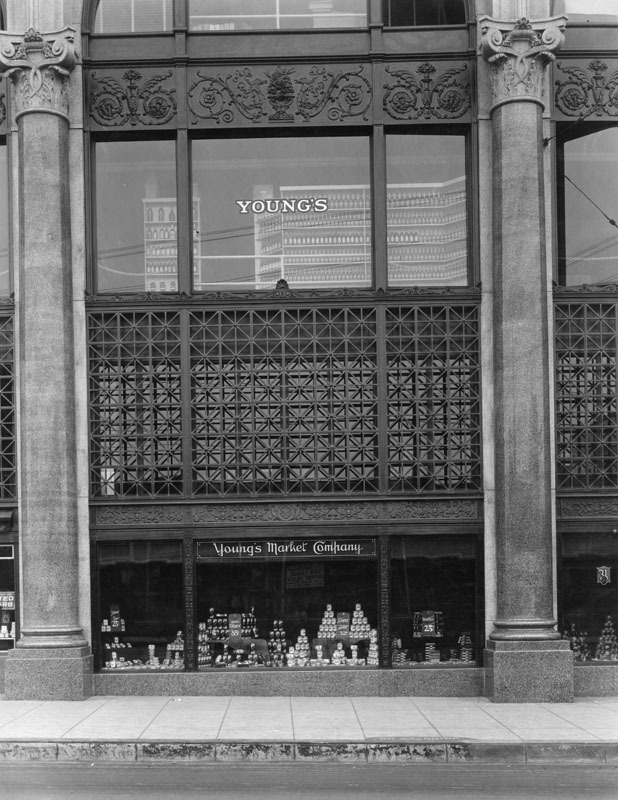
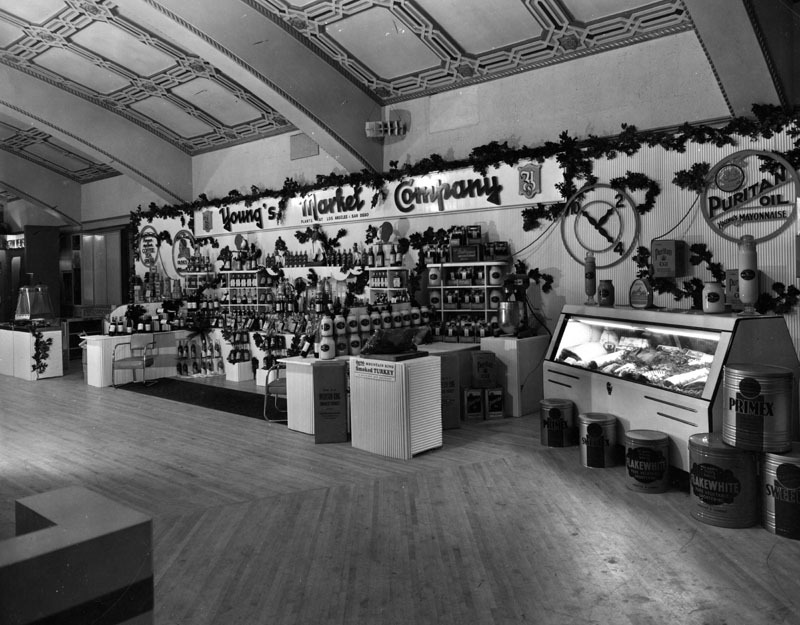
Young’s Market Company opened in 1888 as one of the city’s first higher-end grocery retailers. By the 1930s, if you wanted Danish blue cheese or couldn’t live without smelt from the Columbia River, this was your spot. (photos from LAPL collection)
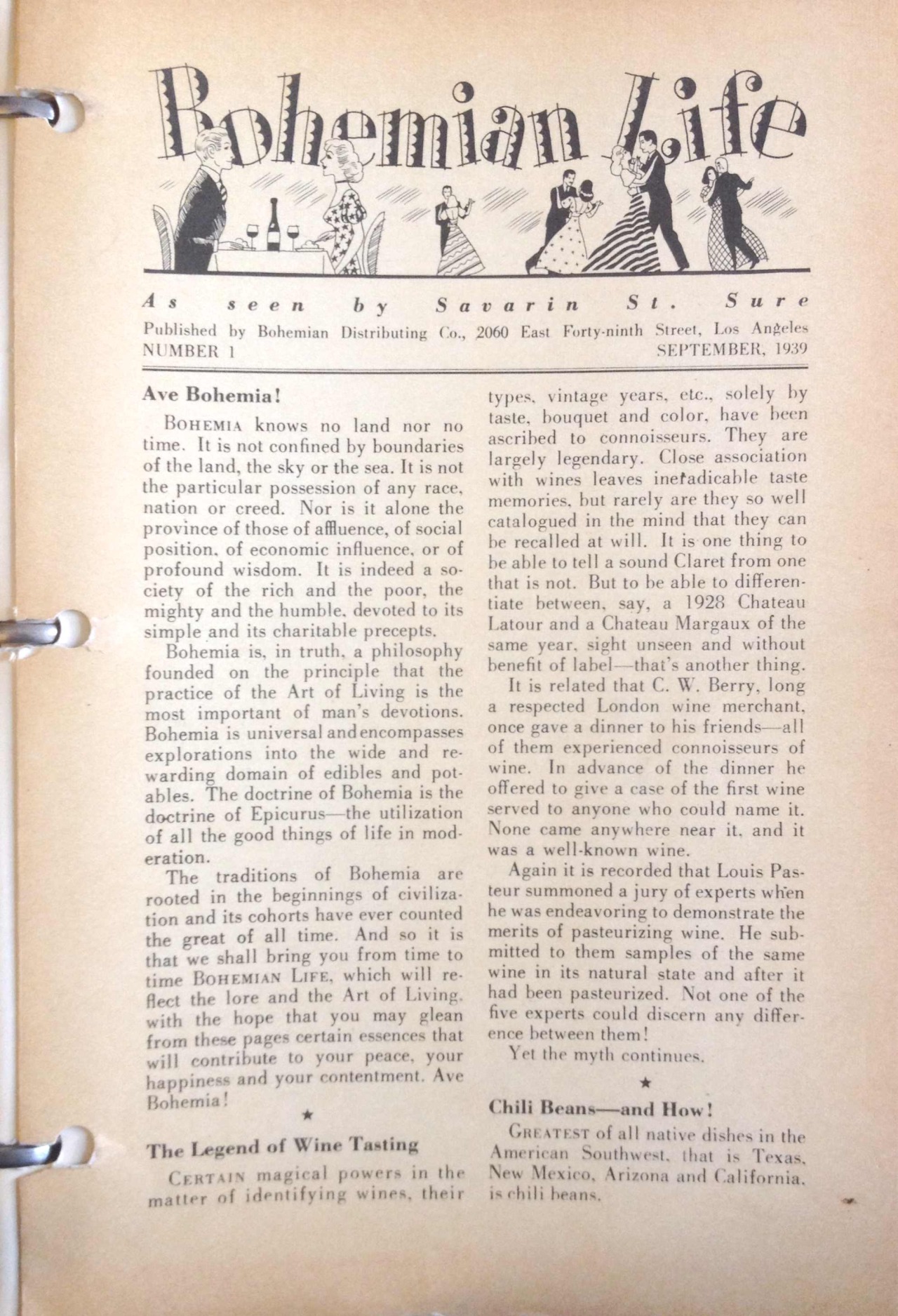
Decades before food blogs, Chowhound, & Lucky Peach, there was the monthly Bohemian Life newsletter. Published by L.A.’s Bohemian Distributing Company– purveyors of fine wines, spirits, ales, and beers– it launched with this first issue in September 1939. Its coverage of L.A. gourmet eats and drinks (penned by Touring Topics editor Phil Hanna under the goofy Jean Anthelme Brillat-Savarin nom de plume “Savarin St. Sure”) quickly made it the essential reading material of the city’s rising epicurean class.
You can go from Santa Barbara to the border, and you will not strike one place where you can get a really distinguished meal. There are, to be sure, the various Biltmores, and in Los Angeles the Ambassador, a restaurant called the Victor Hugo, a hotel called the Town House, and Bernstein’s sea-food place. All of them have their points, and the Town House, I must say, really knows how to put a meal together. But they suffer from two circumstances. The first is that they can’t sell liquor. If you want food and drink at the same meal, you have to go to a speak, and a California speak is so bad that there is nothing to say about it. The other is that they really have nothing to make a distinguished meal with. Meats are obtainable here, and vegetables, the best you can get anywhere; but when it comes to fish, and particularly shellfish, those indispensable embellishments that transform eating into dining, they are simply not to be had. Brother, God hath laid a curse on this Pacific Ocean, and decreed that nothing that comes out of it shall be fit to eat; and anybody who tells you different has simply never fished in another ocean.
(below is a shot of Cain, not eating anything, at a restaurant with Lana Turner)
